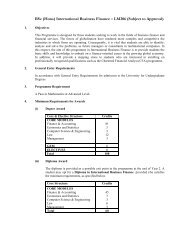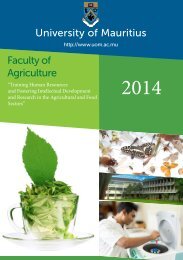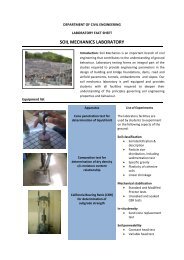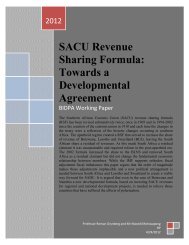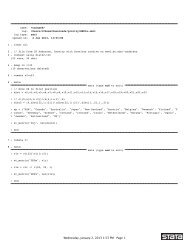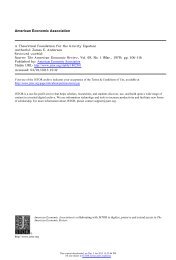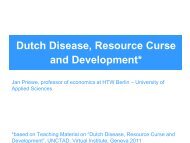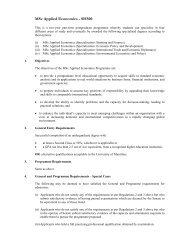Capital Formation and Economic Growth in Mauritius
Capital Formation and Economic Growth in Mauritius
Capital Formation and Economic Growth in Mauritius
You also want an ePaper? Increase the reach of your titles
YUMPU automatically turns print PDFs into web optimized ePapers that Google loves.
1111.51212.5111111.511.5121212.512.5<strong>Capital</strong> <strong>Formation</strong> <strong>and</strong> <strong>Economic</strong> <strong>Growth</strong> <strong>in</strong> <strong>Mauritius</strong>: Does FDI matter?ICITI 2012 ISSN: 16941225Figure 1: impact of capital formation on growthrgdpc <strong>and</strong> privrgdpc <strong>and</strong> pub2.6 2.8 3 3.2 3.4priv1.6 1.8 2 2.2 2.4 2.6pubrgdpc <strong>and</strong> fdi-3 -2 -1 0 1 2FDIUnit root testAlthough aggregate time series tend to be I(0) or I(1), studies such as Harris (2003) <strong>and</strong> Johansen(1995) have contended the existence of I(2) stationary variables. In cases where variables are I(2)stationary, long-run regression tend to be spurious. Also, the ARDL bounds tests procedure is<strong>in</strong>valid when variables are I(2). 8 Therefore, it is crucial to exam<strong>in</strong>e the stationarity status of allvariables <strong>in</strong>cluded <strong>in</strong> the model, to ensure that they are not I(2) or beyond. To assess the order of<strong>in</strong>tegration of the variables the st<strong>and</strong>ard the Augmented Dickey-Fuller (ADF) <strong>and</strong> the Phillips-8 Accord<strong>in</strong>g to Ouattara (2004) the computed F-statistics provided by Pesaran et al. (2001) are not valid for I(2)variables. This is because the lower or upper bounds are assumed to be I(0) or I(1).17





